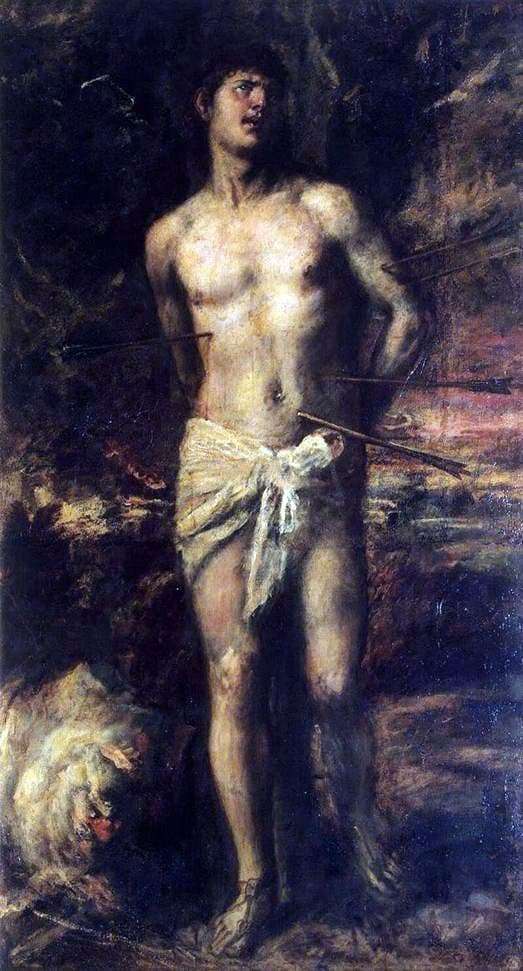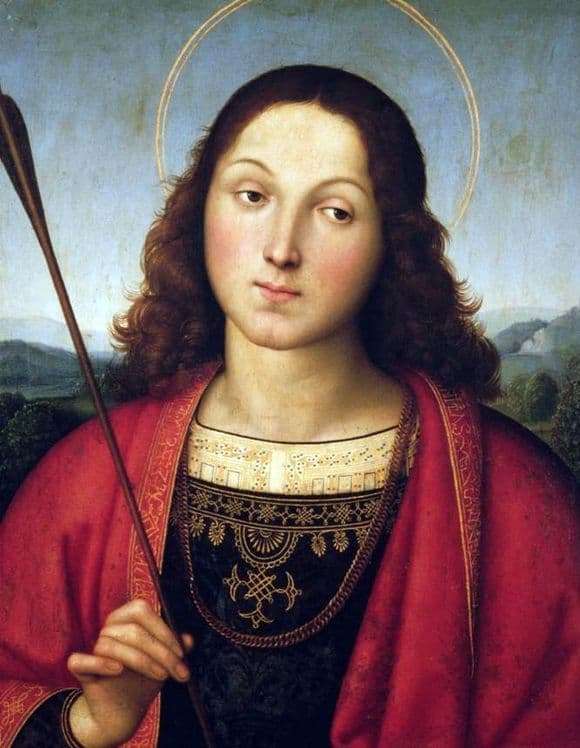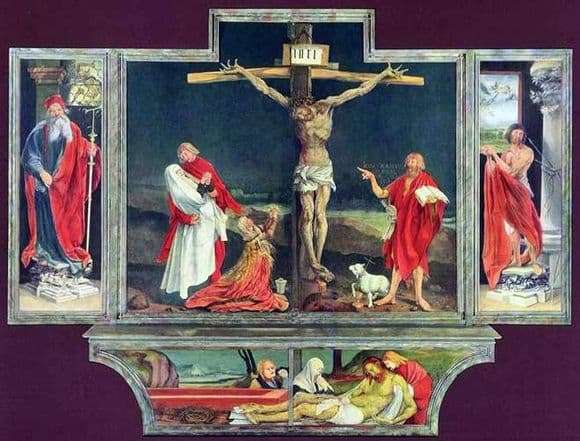
The painting, recognized by the world artistic community as Pietro Perugina’s masterpiece, is mainly due to its unique composition, although the very image of Saint Sebastian is conveyed quite canonically for that era. The huge arch, which serves as the background of the picture, allows you to visually stretch the image, to give Sebastian a truly gigantic size.
The crystal purity of the air, the silence of the celestial distance, peace and tranquility, reigning in the background of the unfolding tragedy, create a unique image of the Saint, his face also does not express any suffering, full of hope, pure awe, look Sebastian humbly sent to heaven. Arrows stuck in the skin of the righteous, do not hurt him, already half way into Paradise, Sebastian no longer feels a physical connection to the mortal earth, his pure gaze is directed to where there is no pain or suffering.
As a Roman warrior, Sebastian served in the personal imperial guard, but was executed for his unwavering faith in Christ. Other artists who wrote St. Sebastian, sentenced to the treasury through execution, were attracted by the opportunity to portray the beauty of the human body. However, the best thing to do is remove it from Pietro Perugino.
The famous Italian painter of the early Renaissance was highly appreciated for his work. Perugino was a teacher of Raphael, a man who created unique proportions and perspectives, who at the same time did not depart from the canons of classical painting.
Monumental painting brought the artist first glory, and his frescoes, which are almost not preserved to this day, are also considered an integral part of the artistic heritage of humanity. Pietro Perugino, like many other prominent artists of that era, was invited to the Sistine Chapel to be painted by the Pope himself.
Description of the painting by Pietro Perugino “Saint Sebastian”







